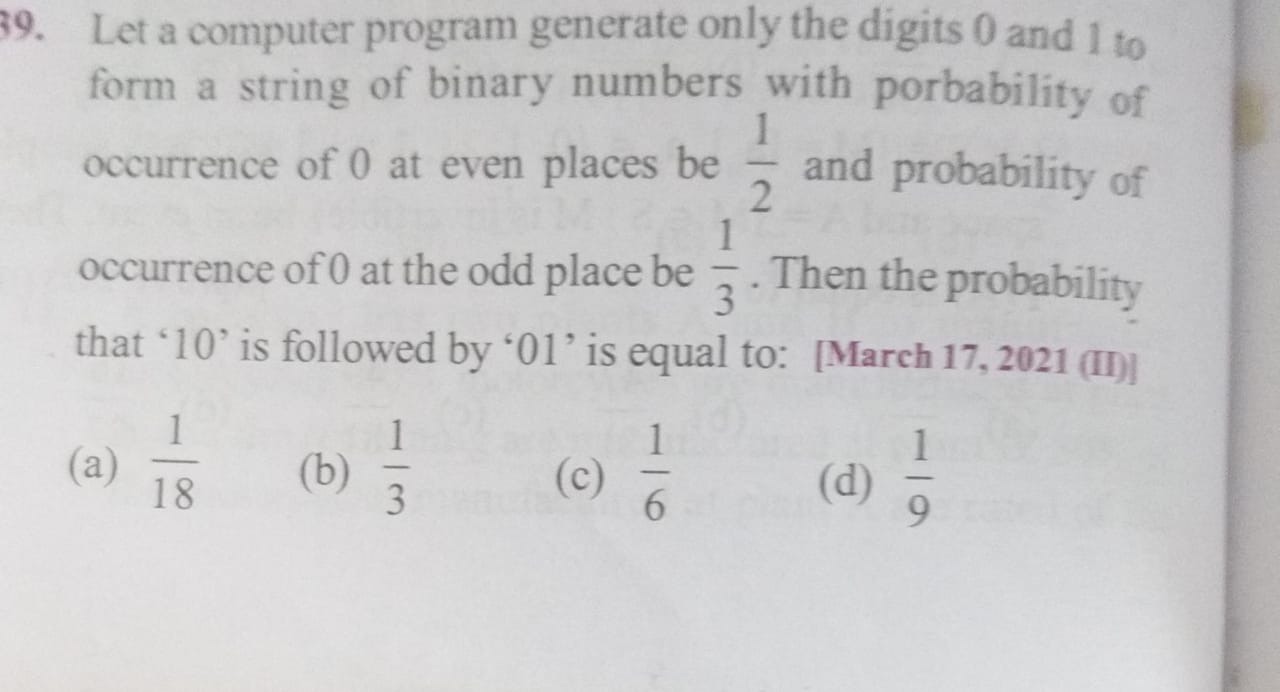Question
Question: Let a computer program generate only the digits 0 and 1 to form a string of binary numbers with prob...
Let a computer program generate only the digits 0 and 1 to form a string of binary numbers with probability of occurrence of 0 at even places be 21 and probability of occurrence of 0 at the odd place be 31. Then the probability that '10' is followed by '01' is equal to:

A
181
B
31
C
61
D
91
Answer
181
Explanation
Solution
The problem asks for the probability of the sequence '1001'. Given probabilities: P(0 at odd place)=31⟹P(1 at odd place)=1−31=32 P(0 at even place)=21⟹P(1 at even place)=1−21=21
For the sequence '1001' starting at position 1:
- Position 1 (odd): Digit is '1'. Probability = P(1 at odd)=32.
- Position 2 (even): Digit is '0'. Probability = P(0 at even)=21.
- Position 3 (odd): Digit is '0'. Probability = P(0 at odd)=31.
- Position 4 (even): Digit is '1'. Probability = P(1 at even)=21.
Assuming independence, the probability of the sequence '1001' is: P(’1001’)=P(1 at odd)×P(0 at even)×P(0 at odd)×P(1 at even) P(’1001’)=32×21×31×21=362=181.
